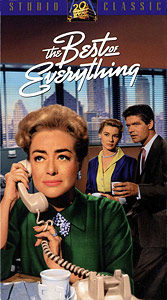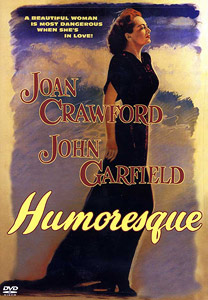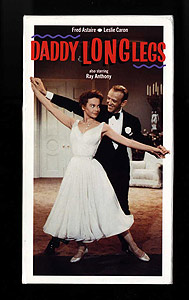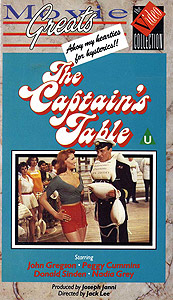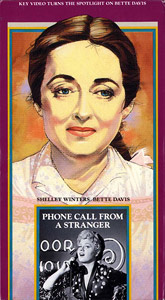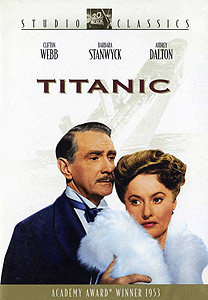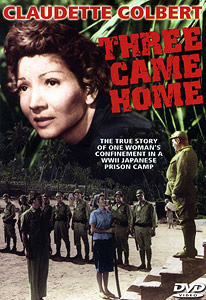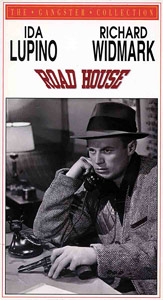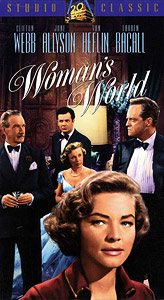|
Jean Negulesco
(1900-1993) Film Director and Artist
Name also spelt: Ion Negulescu
Born 26 February 1900 at Craiova, Doli, Romania.
Died 18 July 1993 at Marbella, Spain.
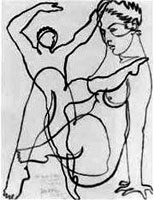 Pen and ink sketch
Pen and ink sketch |
His life was recorded by him in his witty and fascinating autobiography, Things I Did and Things I Think I Did. In Paris as a young man he was a friend of Constantin Brancusi and many other famous artistic and literary people in Montparnasse and Montmartre.
As a younger director, Negulesco directed such gritty Hollywood classics in the noir category as Road House (1948) and The Mask of Dimitrios (1944). The former featured a spectacular performance by the young Ida Lupino, who was facilitated in her domination of the film by the loving care of Negulesco's lingering and impeccably framed shots of her, resulting in one of the most sensuous and mesmerising performances by an actress of that time. In that film, Richard Widmark played one of the psychotic characters in which he specialized, a performance which was thoroughly professional and suitably chilling. The film was an extraordinarily powerful edge-of-the-seat melodrama, with an intensely erotic undertow. The latter film contains some of the finest performances of Sidney Greenstreet and Peter Lorre and is a first rate nail-biting mystery thriller. In the same year, Negulesco directed Sydney Greenstreet and Peter Lorre also in The Conspirators (1944), along with Hedy Lamarr and Paul Henreid. The Conpirators, being so similar in many ways, is sometimes compared unfavourably to Casablanca, which appeared two years earlier and also starred Paul Henreid as a heroic resistance fighter on the run. The Conspirators is actually a fine pastiche of a wartime melodrama (which, after all, is precisely what Casablanca was as well), in which the old pros manage to look like they really mean it as they enact farfetched situations. Negulesco has fun sending up German expressionism, with many excessively dramatic cast shadows and tense faces, not to mention acute angles. Possibly as a joke, the film begins with a map of Europe, and the camera suddenly plunges like an eagle on a tiny country prominently marked 'Netherlands', which is one way of avoiding a caption saying: 'Somewhere in occupied Holland', and is an implied rebuke to the provincial Americans who don't normally know where any country is but their own. In any case, the action moves almost immediately to Lisbon. Hedy Lamarr is amazing to look at and gaze upon, as usual, but is no Ingrid Bergman steaming with suppressed passion, as she is too cold. Nor is there a love triangle, as there is in Casablanca. All in all, it is really 'a bit of hokum', but a nicely atmospheric one, enjoyable, and more a study in atmosphere and a classic Hollywood pastiche of the Nazi menace and of suffering love and separations made necessary by heroic fighters against the Hun. One of the most interesting performances is of the Lisbon policeman, who provides one of the few examples of any depth of character at all in a film which is all formula, with a script which someone evidently wrote in his sleep.
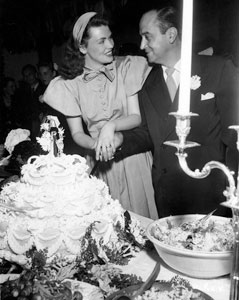
 Jean Negelescu married actress Ruth “Dusty” Anderson in 1946
Jean Negelescu married actress Ruth “Dusty” Anderson in 1946 |
In 1946, Negulesco directed Three Strangers, from a screenplay by John Huston. Once again, for the third time, he worked with Sydney Greenstreet and Peter Lorre. In this film, Greenstreet gives one of the finest performances of his career, as an up-tight London solicitor in a state of extreme desperation who is slipping over the edge into madness. Peter Lorre is also excellent as a laid-back drunk. As he was later to do with Ida Lupino, Negulesco was able to coax a stunningly mesmerising performance out of his lead actress, this time Geraldine Fitzgerald, who plays a psychopathic and unstable woman of alluring beauty and mystery who suddenly goes from states of strangely trancelike and meditative tranquillity into violent and uncontrollable rages. The tale is a strange one based upon a statue of the Chinese goddess Guanyin and its supposedly mystical powers. This film is a very successful and tense thriller, rich in irony and with plenty of 'message'.
Negulesco was also noted at this time for his widely-praised Johnny Belinda (1948), starring Jane Wyman. That film won an Oscar for Best Actress for Jane Wyman and an Oscar nomination for Best Director for Negulesco himself. In 1949, Negulesco directed a film in London entitled Britannia Mews, also sometimes known as The Forbidden Street. This film, set in Victorian London, defies categorisation, but it could perhaps be described as a bizarre melodrama. The female lead is Maureen O'Hara, and although she exudes a sympathetic warmth as a character on screen, sex appeal in her case is entirely lacking. There was clearly no love affair between the director and the leading lady in this instance, as O'Hara is stone cold in that sense. But that does not mean to say that she was not good in the film. In fact, she was well cast and delivered an excellent performance except for the anomaly that as an upper middle class Londoner, she should clearly not have had a soft Irish accent. O'Hara is especially good at portraying a character haunted by relentless anxiety, as a long-term blackmail victim. Dame Sybil Thorndike delivered a terrifying performance as an unscrupulous old hag. Dana Andrews was probably cast in the film by the producers in order to try for some trans-Atlantic box office appeal. He plays two characters, and in the first is somewhat awkward, but is excellent the second time around. This film is strangely haunting, has a most unusual story, and is well acted and directed.
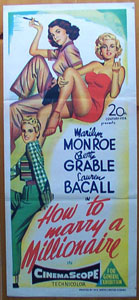 How to marry a Millionaire
How to marry a Millionaire |
In 1950, Negulesco directed another charming and compelling film in England entitled The Mudlark. This is a story of a young orphan who sleeps in a barrel and lives by finding things of small value which have been dropped into the mud of the banks of the River Thames ('a mudlark'). He finds a portrait of Queen Victoria on a medal, and when told by someone that the woman, whom he does not recognise, is 'The Mother of England' who lives in Windsor, he goes in search of her, to see what a mother looks like. In this delightful fable, the boy sneaks into Windsor Castle and is caught trying to see the Queen, but his intentions are misinterpreted, and he is suspected of being a dwarf who wishes to kill the Queen. Some of the dialogue in the film is absolutely hilarious, with lines which are obviously gags written by some Hollywood gag writer, which were inserted into the script with marvellous effect. Irene Dunne plays the reclusive Queen Victoria, who refuses to leave her castle because she is in mourning for her late husband (and has been for years). Her friend Mister Brown, played to perfection by Finlay Currie, must have been quite a shock for audiences at the time, because it was not until much later, in John Madden's 1997 film Mrs. Brown that the public at large really understood who exactly that strange character was. Negulesco was certainly ahead of his time in that area. Prime Minister Disraeli is a studied and impeccable performance by Alec Guinness. Needless to say, the delightful little boy is discovered not to be a dwarf assassin at all, wins the hearts of all, and is responsible for persuading the Queen that she is still loved by her people, so that she finally leaves her castle and resumes her role as an active monarch. The film is a classic, funny and sad, ironical and satirical all at once. It also contains a brilliantly articulate and thundering speech by Disraeli in Parliament about the deprivations of the poor, and the need for assisting them. This is but one of countless film classics which cannot be acquired commercially on video or DVD, and must be obtained from a collector, sought for on Ebay, or recorded off the air in the unlikely event that it might be shown. The same is true of many of Negulesco's films, which is why the Foundation steadily acquires viewing copies of the rare and commercially unobtainable films of the Romanian personalities who concern us.
Later in his career, Negulesco settled back into vintage 1950s tales of a less harrowing nature, including some classics such as Woman's World (1954) and The Best of Everything (1959), both of which are fascinating studies of the manners and mores of the time and watching them is like stepping into a perfectly preserved time capsule. Daddy Long Legs (1955) had its charming moments, starring an elderly Fred Astaire who could still dance like a floating cloud, and a pert Lesley Caron. But that film is now suffocating in its saccharine vacuity and stupefying for its atrocious designs and artwork. Clearly, this was the side of Negulesco as a director we would rather not know about. To call it excessively naff would be to flatter it. Negulesco was a man of great ability who sometimes went soft at the centre.
Link to Jean Negulesco Filmography (IMDb)
|
|





